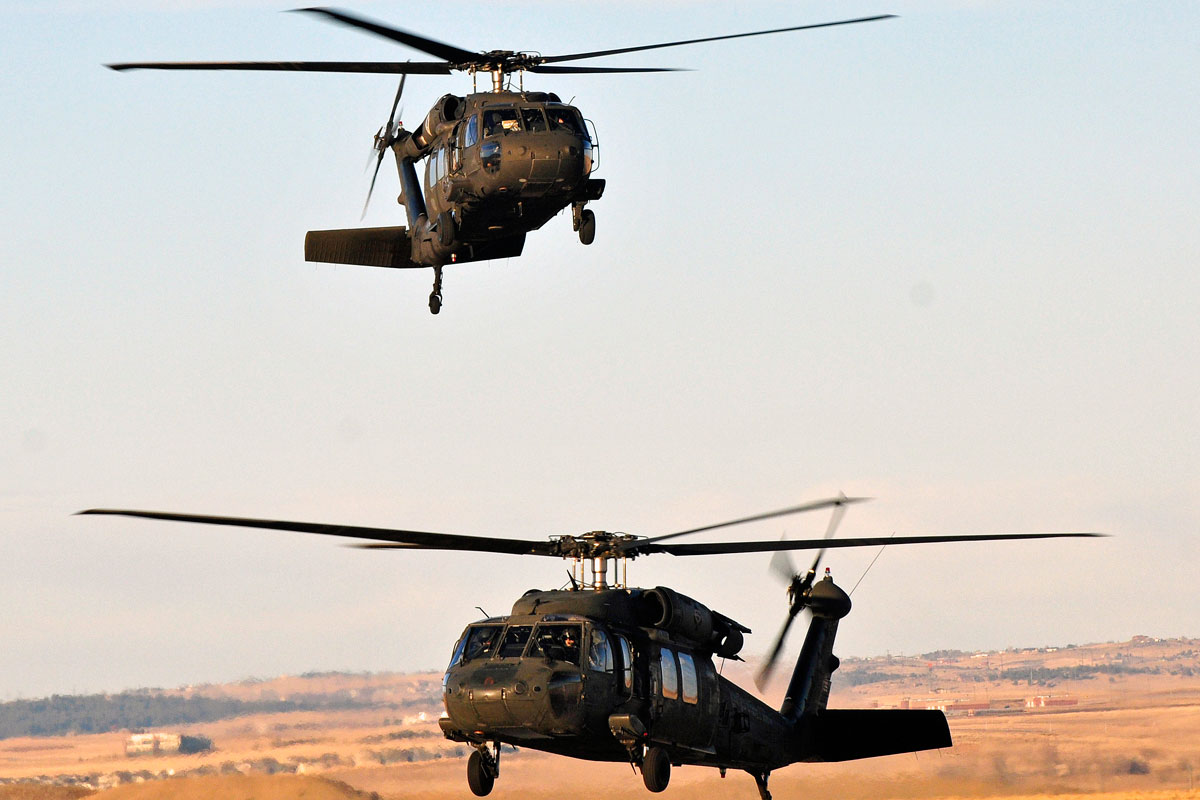Accomplishing Quality: Trick Strategies for UH 60 Helicopter Maintenance
Accomplishing Quality: Trick Strategies for UH 60 Helicopter Maintenance
Blog Article
Recognizing the Mechanics and Engineering Behind Uh 60 Helicopters
The UH-60 helicopter, commonly understood as the Black Hawk, stands as a pinnacle of contemporary rotorcraft technology, symbolizing a blend of robust design and elaborate mechanics. From its beginning to its current models, the evolution of this airplane showcases a combination of innovation and functionality. As we peel back the layers of the UH-60's layout, a world of detailed systems and thorough engineering comes to light. Understanding the auto mechanics and design behind this versatile airplane unveils a world where accuracy meets power, and where each element plays a critical role in accomplishing trip.
Background of UH-60 Helicopters
The background of UH-60 helicopters traces back to the late 1970s when the United States Army looked for a flexible and sophisticated energy helicopter to replace its aging fleet. In response to this demand, the Sikorsky Aircraft Corporation created the UH-60 Black Hawk helicopter. Presented in 1979, the UH-60 promptly became a staple in military operations as a result of its outstanding capacities.
The UH-60 was made to master a variety of goals, consisting of troop transportation, clinical discharge, electronic war, and special operations. Its ability to adapt to various duties made it a valuable possession to the united state Military and other military pressures around the globe
Throughout the years, the UH-60 system has undertaken several upgrades and variations to enhance its efficiency and equal advancing goal demands. These helicopters have seen comprehensive solution in disputes such as the Gulf War, Afghanistan, and Iraq, showcasing their dependability and adaptability in diverse functional atmospheres. The UH-60's abundant history is a testament to its long-lasting tradition as a premier energy helicopter.

Engine and Power Systems
Utilizing cutting-edge propulsion modern technology, UH-60 helicopters are geared up with innovative engine and power systems to guarantee ideal performance and integrity in a variety of operational scenarios. The UH-60, typically understood as the Black Hawk, is powered by two General Electric T700-GE-701D engines, each qualified of providing up to 1,940 shaft horse power. These turboshaft engines provide the essential thrust for the helicopter to bring out its goals efficiently, including troop transport, clinical evacuation, and fight support.

Rotor System and Aerodynamics
How do the blades system and the rules of aerodynamics try this website of UH-60 helicopters add to their operational efficiency and trip capacities? The blades system of the UH-60 helicopter plays a vital role in offering lift and propulsion.
The rules of aerodynamics also play an essential function in the performance of UH-60 helicopters. The structured fuselage and blades blade style decrease drag, enabling the helicopter to accomplish greater speeds and better fuel performance. The aerodynamic style of the UH-60 also contributes to its ability to operate in varied environmental conditions, including hot temperature levels and high altitudes.
Avionics and Flight Control Systems

In its elaborate control with the blades system and aerodynamics of UH-60 helicopters, the avionics and flight control systems form an essential network of technologies forming the airplane's functional capacities. In the UH-60, these systems include electronic display screens, communication radios, General practitioner navigation, weather condition radar, and auto-pilot systems.
The flight control systems of the UH-60 are in charge of converting the pilot's inputs right into the appropriate adjustments to the blades system, making certain stable flight and this content ability to move. These systems contain hydraulic actuators, servos, and computers that interact to manage the tail and major rotors, as well as other flight control surface areas. By specifically taking care of the helicopter's trip dynamics, these systems allow pilots to carry out a wide variety of missions, from transport and search-and-rescue to fight operations, with accuracy and confidence.
Function and Applications in Aviation
The role and applications of avionics and trip control systems in aviation are essential to ensuring the effective and risk-free operation of aircraft, consisting of UH-60 helicopters. Avionics systems in UH-60 helicopters encompass a series of electronic systems that help in navigating, communication, surveillance, and regulating different airplane functions. These systems include digital display screens, autopilot systems, interaction radios, GPS navigation tools, and weather condition radar. Flight control systems play a critical function in steering the helicopter airborne, maintaining stability, and making sure accurate motions. The fly-by-wire modern technology made use of in contemporary UH-60 helicopters equates pilot inputs into electronic signals, which are after that analyzed by the flight control computers to adjust the aircraft's control surfaces. Additionally, these systems incorporate safety and security functions such as auto-pilot Full Report settings, terrain understanding advising systems, and stability enhancement systems to improve the total security and operational abilities of the UH-60 helicopters in different goals, consisting of troop transport, medical evacuation, search and rescue, and airborne firefighting.
Final Thought
In conclusion, the UH-60 helicopter is a flexible airplane with a rich history and progressed engineering. Its engine and power systems, rotor system, aerodynamics, avionics, and flight control systems all work with each other to make it a reliable and reliable device.
In its elaborate coordination with the blades system and aerodynamics of UH-60 helicopters, the avionics and flight control systems form an essential network of modern technologies shaping the airplane's functional capabilities.The trip control systems of the UH-60 are responsible for equating the pilot's inputs right into the appropriate modifications to the rotor system, ensuring stable trip and maneuverability. Avionics systems in UH-60 helicopters encompass an array of digital systems that help in navigating, interaction, monitoring, and controlling various airplane features. In addition, these systems include safety features such as auto-pilot modes, surface recognition advising systems, and stability enhancement systems to improve the overall safety and functional abilities of the UH-60 helicopters in numerous objectives, consisting of troop transportation, medical emptying, search and rescue, and airborne firefighting.
Its engine and power systems, blades system, aerodynamics, avionics, and trip control systems all work with each other to make it a efficient and trusted device.
Report this page